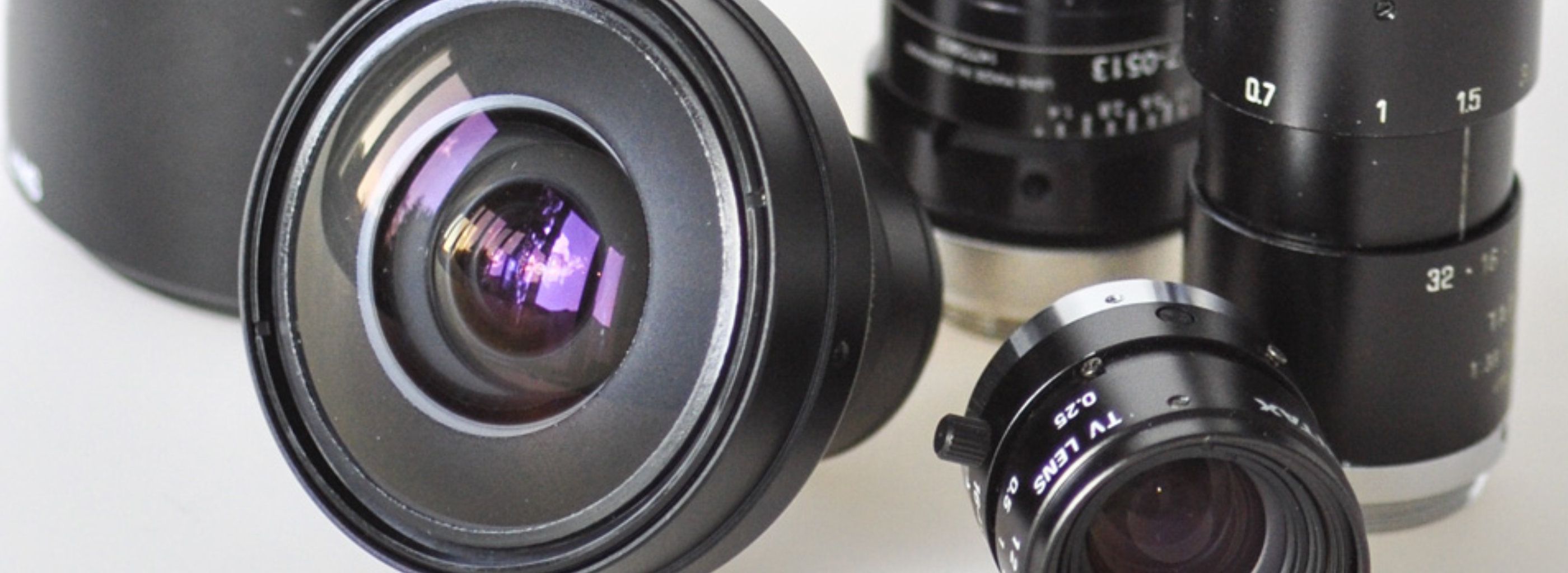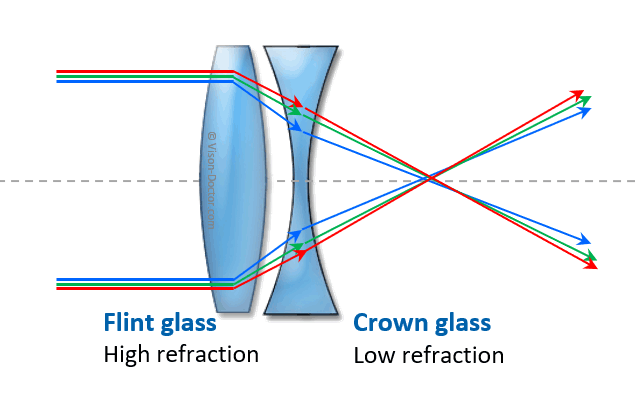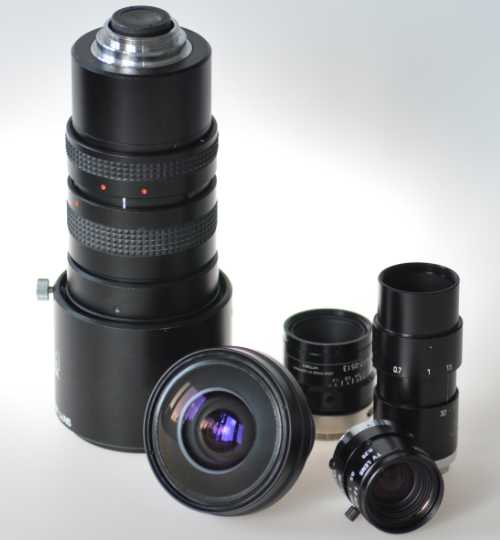





















Lateral colour aberration, also known as chromatic aberration, is a normal effect found in all spherical lenses. The refraction of a lens depends on the wavelength (= colour) of the incident light; the focal point of a lens shifts with the wavelength.
This difference in focus leads to colour fringing in the image, especially with extremely hard contrasts of a light-dark pattern. It results in colour gradients at the edges of the image, as well as a reduction in contrast due to the blurred image.

White light coupled into an uncorrected lens system. There is a lot of chromatic aberration, especially at the edge of the image.

Focus difference creates colour fringing
Particularly when using extreme wide-angle optics and differently coloured illumination, this leads to significantly diminished or enlarged images, as the focal points (and thus the focal length of the lens) shift.
The error can be remedied by stopping down the lens, as this generates an enhanced depth of field and reduces the blurred zones.
By way of design, this error can be corrected by grouping two lens elements, so-called dichromates. The longitudinal aberration effects of a highly refractive and a lowly refractive diverging lens neutralise each other. As an alternative, very expensive aspheric lenses can be used, too.
The lateral aberration has the same cause as the longitudinal aberration and occurs with rays of light close to the margin. Differently coloured parts of the image appear in different size. This error cannot be corrected by stopping down.

Especially in colour applications, it is important that there are no colour errors in the image. Colour corrected lenses are designed to eliminate chromatic aberration.
If the lens is corrected for the two colours blue and red, it is called an achromatic lens.
If the lens is optimised for blue, green and red light to avoid chromatic aberration, it is called an apochromatic lens
In practice, you will soon notice whether your lens is corrected in this way or not. Illuminate with red light and focus your image. Now change the light and use blue light. If the image has become blurred and you have had to refocus, your lens has not been specially corrected. The shift in focus is even more extreme when using IR illumination. Special IR corrected lenses are available for these applications.
Vision-Doctor.com is a private, independent, non-commercial website project without customer support.
For the best advice and sales of machine vision lenses please click here.
(external link partner website in Europe - All listed lenses can be ordered here)
